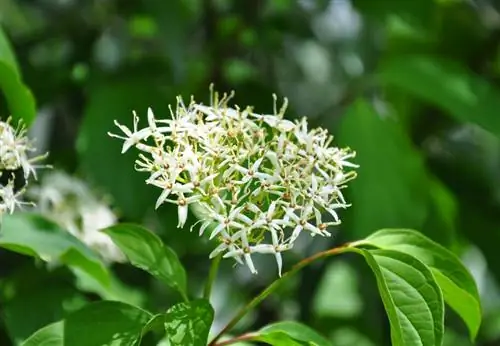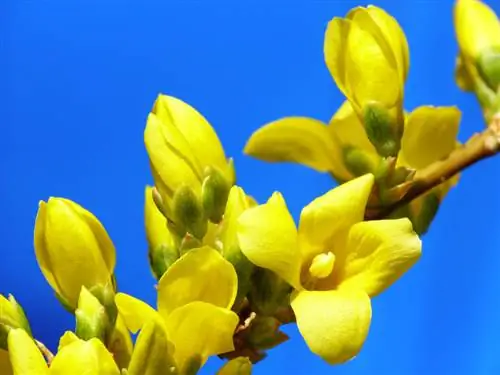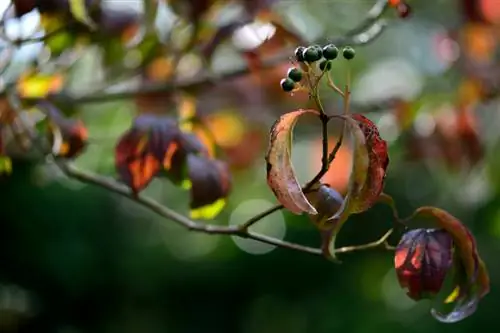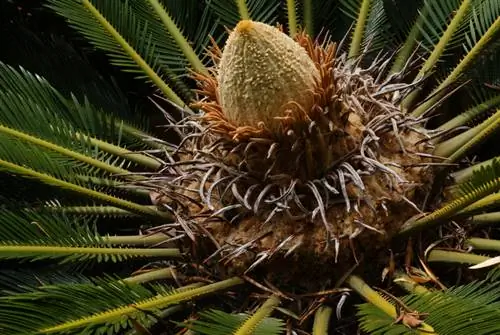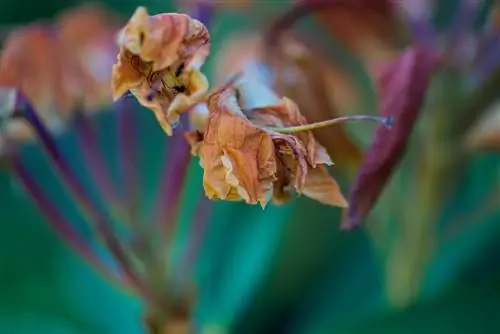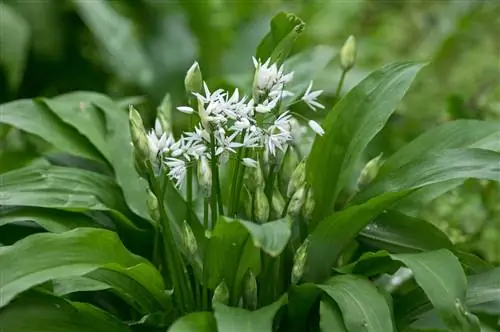- Author admin [email protected].
- Public 2023-12-16 16:46.
- Last modified 2025-06-01 06:02.
The red dogwood is a native flowering tree, particularly widespread in light mixed and deciduous forests, but is also often cultivated in gardens due to its beautiful flowers and lush growth. The plant is considered to be extremely easy to care for and can be satisfied quite quickly due to its demands on the soil and location.
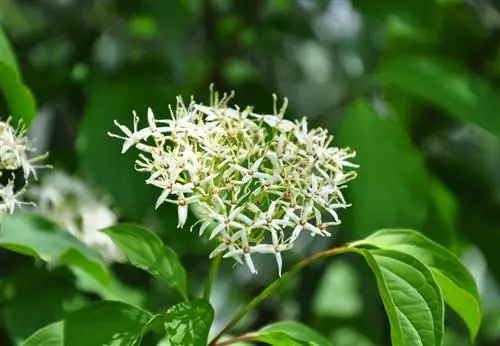
What are the characteristics of the red dogwood?
The red dogwood (Cornus sanguinea) is a native flowering tree that impresses with its reddish branches, white flower umbels, egg-shaped leaves and bluish-black drupes. The plant is easy to care for, grows lushly and is suitable for both gardens and hedges.
Red dogwood - a brief overview
- Botanical name: Cornus sanguinea
- Genus: Dogwood (Cornus)
- Family: Dogwood family (Cornaceae)
- Popular Names: Blood Red Dogwood, Red Hornbush, Dogberry, Red Bonewood
- Origin and distribution: Europe to Central Asia, native trees
- Growth height: between three to five meters
- Typical features: reddish colored branches, very hard wood
- Location: sunny to shady, tolerates shade
- Soil: almost any soil, as long as it is permeable and not too moist
- Flower: white, flat umbels
- Flowering period: May to June
- Fruits: black-bluish, small stone fruits
- Leaves: ovate, entire margins
- Use: ornamental shrub, hedge
- Toxicity: slightly poisonous, fruits can only be eaten when cooked
- Winter hardiness: yes
Dogwood not only has great ornamental value
Bright red bark, wonderful white flower umbels, lush foliage and growth: The red dogwood impresses with its attractive appearance and is also an important food source for bees, bumblebees, butterflies and various wild birds. Its fruits also serve as food for humans, as they can be cooked into juice or jam.
Caution: Red dogwood is slightly poisonous
Nevertheless, planting the red dogwood needs to be carefully considered, because the bark, leaves and roots of the flowering bush in particular are poisonous. Small children and small pets such as guinea pigs and rabbits are particularly at risk. While eating various parts of the plant can be fatal for the latter, the red dogwood only causes mild symptoms of poisoning in humans such as nausea, diarrhea and vomiting. Its ripe fruits are inedible raw, but not poisonous.
Red Dogwood Care and Pruning
The red dogwood does not require much care and is considered extremely undemanding. As one of the few water-loving dogwood varieties, you can additionally water young red dogwood specimens in particular on hot summer days. Even light fertilization - compost is particularly suitable for this - rewards the shrub with rapid growth and abundant flowering. In addition, red dogwood is very tolerant of pruning and can therefore be kept under control.
Tip
Don't be surprised if your young dogwood doesn't want to bloom: the shrub needs a few years until it blooms for the first time.

